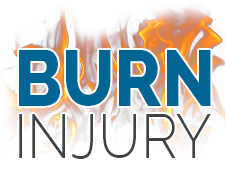Burn Statistics
The American Burn Association states that roughly 450,000 patients receive hospital and emergency room treatment for burns each year. This statistic does not account for burn injuries treated in hospital clinics, private medical offices, or community health centers. Of these burn injuries, roughly 3,400 burn injury deaths occur each year. According to the Centers for Disease Control and Prevention (CDC), burns and fires are the third leading cause of death in the home. In 2010, a fire-related death occurred every 169 minutes. A fire injury occurred every 30 minutes.
Burn Cause Statistics
The American Burn Association states that:
- 44 percent of all admissions to burn centers result from fire or flame burns.
- 33 percent of all burn center admissions result from scalding injuries caused by wet or moist heat.
- Direct contact with a hot source accounts for nine percent of burn center admissions.
- Electrical burns account for four percent of burn center admissions.
- Chemical burns account for three percent of all burn center admissions.
- The remaining seven percent of burn center admissions are caused by other, miscellaneous sources.
Pediatric Burn Statistics
The American Burn Association reports the following pediatric burn statistics for 2000:
- Scalding is the most common burn injury in children under four years old, accounting for 200,000 injuries per year.
- An estimated 50 percent of scalds are from spilled food and drinks, while the remainder are primarily from hot tap water and hot objects such as irons, stoves, and heaters.
- Each year, roughly 250,000 children under age 17 require medical attention for burn injuries.
- Roughly 15,000 children require hospitalization for burn injuries.
- About 1,100 children per year die from fires and burn injuries.
Burn Death Statistics
The American Burn Association states that of the 3,400 U.S. burn injury deaths each year:
- 2,550 of these deaths are a result of residential fires.
- 300 of these deaths result from vehicle crash fires.
- The remaining 550 result from other causes, such as flames, smoke inhalation, scalding, and electricity.
Burn Cost Statistics
The Centers for Disease Control and Prevention provides the following statistics for costs related to burns:
- Males account for roughly $4.8 billion, or 64 percent, or total fire and burn-related costs each year, while females account for the remaining $2.7 billion, or 36 percent.
- Fatal burn and fire injuries cost roughly $3 billion, which accounts for two percent of the total cost of fatal injuries.
- Burn and fire hospitalization accounts for $1 billion, or one percent of hospitalized injury costs.
- Non-hospitalized burn and fire injuries account for two percent of non-hospitalized injury costs, or $3 billion.
Sources:
“Avoid complications with pediatric burn injuries.” ED Nursing 1 May 2008. Academic OneFile. Web. 20 Dec. 2014.
“Burn Incidence and Treatment in the United States: 2012 Fact Sheet.” American Burn Association. American Burn Association. Web. 20 Dec 2014. <http://www.ameriburn.org/resources_factsheet.php>.
“Fire Deaths and Injuries: Fact Sheet.” Centers for Disease Control and Prevention. U.S. Department of Health and Human Services, 11 Oct 2011. Web. 20 Dec 2014. <http://www.cdc.gov/homeandrecreationalsafety/fire-prevention/fires-factsheet.html>.
Muller, Michael J., and David N. Herndon. “The Challenge of Burns.” The Lancet 343.8891 (1994): 216-20. ProQuest. Web. 20 Dec. 2014.
Xu, Rong Xiang, Xia Sun, and Bradford S. Weeks. Burns Regenerative Medicine and Therapy. Basel: Karger, 2004. eBook Collection (EBSCOhost). Web. 27 Dec. 2013.













